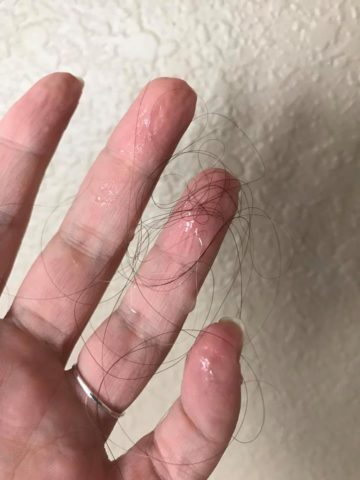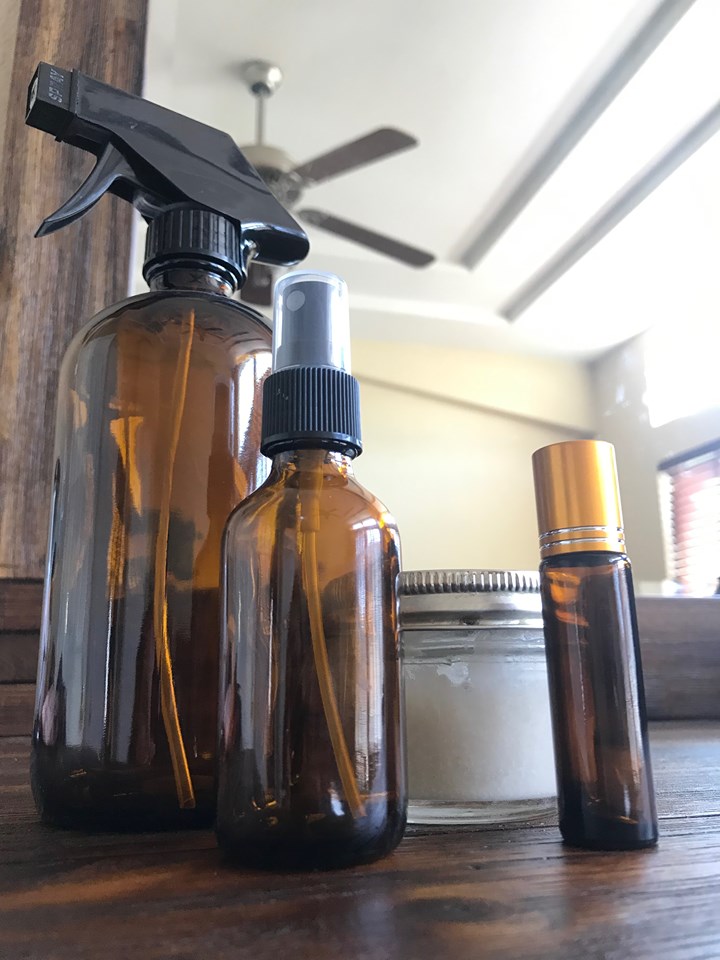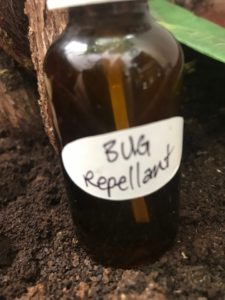You’ve seen it a hundred times.
Your good friend Kathy is just a normal person, minding her own business… then
BAM!
Kathy joins an MLM company.
You avoid talking to her.
You ignore her messages in your inbox.
 You may even unfollow her on social media so you don’t have to see the posts about her products.
You may even unfollow her on social media so you don’t have to see the posts about her products.
You are convinced that MLMs are bad news. You haven’t ever actually done business with one before, but you’ve heard a lot of rumors. And they aren’t good:
- The products are overpriced
- The reps are obnoxious
- They have bad business practices
- MLMs are a scam
While some of this may be true of some companies or some reps, it is important to note that Network Marketing (previously known as Multi-Level-Marketing) is none of these things in and of itself.
Network Marketing is just a way that some companies do business.
 It’s simply a different marketing strategy.
It’s simply a different marketing strategy.
Just as most companies employ “conventional” marketing techniques like TV commercials, billboards, internet banners and other such methods, Network Marketing companies employ an equally valid marketing technique:
Word of Mouth
It is well-known in the world of retail sales that the gold standard of advertising is word-of-mouth advertising for a couple of reasons:
- Word of Mouth advertising is free
- Word of Mouth advertising is incredibly effective:
-
- If your mom tells you she just had the best burger of her life at the new restaurant on the corner…what will you be having for lunch tomorrow?
- If a guy you meet at work tells you Lasik eye surgery changed his life and he hasn’t had to use glasses for 13 years, are you likely to consider it for yourself?
- If you watch a girl at church go from a size 18 to a size 6 and she tells you it’s because she started drinking a certain brand of shake, how likely are you to look up that specific brand as soon as you get home?
 Word of Mouth Advertising is powerful. When someone you trust tells you that a product is good, you listen. And you are much more likely to buy that product than if you just saw it on a TV commercial.
Word of Mouth Advertising is powerful. When someone you trust tells you that a product is good, you listen. And you are much more likely to buy that product than if you just saw it on a TV commercial.
And that referral didn’t cost the company anything!
Companies all know that word-of-mouth marketing is the most influential marketing of all, but they all use different ways to entice people to recommend their products.
Some companies offer affiliate programs to bloggers or social media influencers. For example, if you sign up as an affiliate for Amazon, you can create product links that generate a commission for you whenever someone buys. The larger your referral sales, the higher the commissions.
If you like to look at reviews before buying a product, you have probably seen reviews that said, “I received this product for free/at a discount in exchange for my honest review.” Companies are desperate to harness the power of word-of-mouth. So desperate, they are willing to give their products away for FREE to get it!
If every company in the world could use the power of Word-of-Mouth marketing for every product, they definitely would.
What Makes Network Marketing Different
Network Marketing companies harness the power of Word-of-Mouth marketing instead of traditional marketing methods—and they use those billions of dollars of advertising budget to pay a grassroots army of reps, who live and work among the masses.
People like your cousin Lucy or your uncle Marvin.
People you trust.
People you love.
And if your mom is selling a great shampoo, wouldn’t you much rather use your dollars to support her than buy an inferior quality product from a big box store?
 The strategy is genius if you think about it: the product has to be great, or they won’t find people to recommend it to everyone they know.
The strategy is genius if you think about it: the product has to be great, or they won’t find people to recommend it to everyone they know.
Because of this, the products from network marketing companies are often far superior to anything you can buy on the mass market.
BUT…??
Now let’s look at a few of the objections that may pop up in your mind when considering a network marketing company or opportunity:
Objection #1: The products are overpriced.
I used to think this too. After all, why would I buy a $30 face wash or a $50 supplement when I can get what looks like the same thing for ¼ the price at Target or on Amazon?
It looked like those multi-tiered compensation plans just created a bunch of needlessly expensive products.
Then I did some research.
I started seeing products I really wanted to try from network marketing companies that I couldn’t find anywhere else.
Sure, there is a supplement that says it does the same thing on Amazon a lot cheaper, but when I look at the reviews on that product it doesn’t seem to be working for people. When I find one online that does have great reviews, it is even more expensive than the “expensive” network marketing product I was trying to avoid! And often the network marketing products last a lot longer or include freebies with a purchase… and they want to give me a discount!
When I really started looking into it, I realized the products weren’t overpriced after all. They were often better quality than what I could get anywhere else, and they were cheaper!
Almost every network marketing company offers discounts on their products based on an automatic shipment, and most also offer wholesale pricing to distributors, or to people who want to buy a bundle of products initially.
Quality matters. I have come to learn that I get what I pay for. People aren’t buying expensive things because they are stupid. They are buying more expensive things because there is value there.
Have you ever purchased a cheap product from a retailer and it barely survived the ride home? Purchased a supplement or protein powder of inferior quality that did nothing for you—or worse—made you sick?
These products have rave reviews for a reason. People are paying their prices for a reason. The quality demands it.
Did you know there is a 70% mark up on any product you buy on a store shelf? There are a lot of expenses that go into a product that have nothing to do with its quality:
- Manufacturing
- Advertising
- Distribution
- Retailer Mark-up
You are never paying what it costs to make the product because there are so many steps (and people who need to get paid) in-between.
So if you are buying a bar of soap that costs $1, think about it: what kind of quality can it possibly have? It cost the manufacturer 20-30 cents to make it. Are you willing to wash your body with something that cost 20 cents? If you’ve ever tried to make soap, you know it costs more than $1 just to make it with the raw materials, not even including the effort, marketing and shipping. So that soap you thought was such a good deal? Watered down and likely toxic. All so you could save $1.
The businesses that create products are doing it to make money. Everyone has to make a living. So if they are selling cheap products, it’s worth considering what you are really spending your money on. If it’s an inferior quality product with toxic ingredients that will last you a week instead of a month, are you really getting such a good deal?

Story Time
Once my husband purchased “cheap” underwear at Target. He expected that maybe it wouldn’t last as long as the ones he usually bought, but what he didn’t anticipate was that he couldn’t wear them at all. They were itchy and uncomfortable, and he threw the whole package away. Did he save money or waste it? Now he only buys quality underwear, even if it costs three times as much. They are comfortable and they last 2-3 years, so for him that is the value that matters.
When you do a bit of research, you will find that most network marketing companies provide products of superior quality which present a better value than cheaper products offered in stores.
Another example: for years I looked for a natural shampoo that would make my hair healthy. I tried every product on the market: whatever I could find at my local health food store, at salons and online. Nothing ever worked for me.
My hair was damaged, frizzy, thin and unmanageable. I was frustrated because I was not willing to compromise on ingredients. I only wanted to use something natural… but nothing natural ever worked!
I heard about a hair care brand called MONAT, but I balked at the prices. Why would I pay so much for shampoo? When I looked at salon-quality brands, however, they were even more expensive—and filled with toxic ingredients I didn’t want to use!
Guys.
From the first wash, I could see, feel, smell the difference. My hair was smoother, shinier, more manageable without me doing anything different! Not only that, but that handful of hair I used to shed in the shower? It was reduced to just a few strands.

I was hooked. How could I not use this stuff? I had been looking for it for YEARS.
And as it turns out, the first bottle I ever purchased lasted me almost a YEAR. That made it cheaper than anything I’ve ever used before: even the clearance stuff of the store shelf at a big box store!
Some things are more important than saving a little cash.
We have to consider the quality of the product.
If I’m faced with a crappy cup of coffee or no coffee at all… I choose no coffee. Every time. It’s not worth it to me if I don’t like it.
The experience also counts for something. Just walking into a locally-owned coffee shop relaxes me. I feel comfortable and wanted: it makes me want to stay awhile. On the contrary: walking into a convenience store is harsh and sterile. I want to get out of there as soon as possible!
I will happily go out of my way to go into a locally-owned coffee shop and pay four times the price of a cup of coffee—because cheap gas station coffee isn’t worth getting at all.
This is the whole idea behind Network Marketing. What if, instead of buying from a corporation, we could buy from our friends… our family… our neighbors?
What if we worked together and helped each other? When all of my friends have small businesses, I can get everything I need from my circle…. I don’t have to step foot into Wal-Mart or Target if I don’t want to. I get the best products for a great value and the best possible customer service—because I’m shopping with my friends.
Objection #2: The reps are obnoxious.
Maybe you’ve had a bad experience with people who were involved with Network Marketing companies. Maybe they hassled you and bothered you and spammed you with information you didn’t ask for.
Maybe someone sent you a friend request on social media, only to immediately send you a cold message asking you to buy their products or share their business with your friends.
 These are not good business practices; they never were. Not only are they annoying, they simply don’t work. Irritated people will not become your friends, your customers or your business partners.
These are not good business practices; they never were. Not only are they annoying, they simply don’t work. Irritated people will not become your friends, your customers or your business partners.
But think about it: just because some people do it wrong doesn’t mean you should never do business with anyone involved in Network Marketing.
As we discussed above, the quality of many products from Network Marketing companies is superior to anything you can find in the store, and often at a better value.
Why would a bad experience with one person or company prevent you from benefiting from great products or even a business opportunity you could really use with another person or company?
Most companies appeal to consumer wants and needs through advertising.
Network Marketing companies appeal to consumers through relationships.
It’s like the difference between going to a gas station for coffee or stopping in at a locally-owned coffee shop.
Sure, you may pay more for the coffee from the coffee shop, but you probably get better quality coffee (that tastes better), a more inviting atmosphere, and you can sit and chat with the owner while you are there.
Which one is really the better value?
Objection #3: Pyramid Scheme!
We’ve all heard that MLMs are “pyramid schemes.”
But this isn’t accurate.
 From Wikipedia: A pyramid scheme is a business model that recruits members via a promise of payments or services for enrolling others into the scheme, rather than supplying investments or sale of products.
From Wikipedia: A pyramid scheme is a business model that recruits members via a promise of payments or services for enrolling others into the scheme, rather than supplying investments or sale of products.
Pyramid schemes are illegal, and don’t involve any products or services. They ask for money from participants, and promise that everyone will make much more money than they “invested.” No products or services are exchanged.
Example: Sally tells Bill that there is an investment opportunity that is really easy. All he has to do is invest $1000 and recruit 2 or 3 other people to do the same, and he will make back $5000. Sound good? Maybe, but it also sounds very sketchy.
Pyramid schemes are illegal for a reason: they are a true scam. People at the top make all of the money, and people at the bottom are left holding the bag when the whole thing collapses.
Network marketing companies aren’t like this at all. There are true products and services involved, and that is what you exchange your money for. Just like when you walk into a store and fill your cart then pay for it… you do the same thing with network marketing companies.
The ONLY DIFFERENCE between network marketing companies and other companies is the way they market their products. That’s it. Just the advertising. Everything else is the same.
Now let’s do a little exercise.
Pull out a piece of scrap paper and draw the organizational layout of the company you work for. Or of Sony. Or Ford.
There’s a guy at the top, right? Usually the CEO. Then a couple of people under him, and a few people under them, and on and on and on.
What shape does your drawing make?

Pretty much every company makes this shape: with the people at the top “making the most money,” and the people at the bottom “doing all the work.”
So next time you are tempted to yell “pyramid scheme…” think about it.

The thing I like about network marketing is that it is a level playing field. Literally anyone can be successful, with little to no start-up cost.
Do you have to work hard? Yes.
Do you have to be determined and persistent? Yes.
But is there any limit to what you can accomplish? No.
Sounds kind of like the American Dream to me.
The tax savings alone make it worth joining a network marketing company, because when you do, you are “starting a business” in the eyes of the IRS, and that means tax deductions, which can get you a fat return check in April.
Besides tax savings, residual income is definitely something you want–and network marketing companies provide that in spades. Would you like to work once and get paid forever? That’s the kind of potential we are talking about here.
To Recap….
Network Marketing is a business model that involves marketing primarily based in Word-of-Mouth advertising. Network marketing companies harness word-of-mouth marketing over traditional mass-marketing methods.
And in the process, they partner with individuals like you and me. They allow us to be their spokespeople, which is way better than hiring celebrities and purchasing TV spots or internet banner ads.
Better for them, and better for us.
It’s better them, because they pay out their “advertising costs” on commissions.
Instead of spending millions of dollars on an advertising campaign, they will pay out millions of dollars in commissions to regular people like you and me.
That advertising money is spent either way. But when it’s spent on commissions rather than advertising, everyone wins.
The company gets more effective advertising, dollar for dollar. And we have the opportunity to build residual, passive income and become financially independent.
Once you understand what Network Marketing is, and what it is capable of giving you, I think you will believe (like I do) that it is the best business model there is.
What Do You Think?
Did you learn anything new about Network Marketing or MLM business strategy?
Will you think differently about it the next time you hear someone say, “I don’t do MLMs,” or, “That’s a pyramid scheme?”
More Resources
Residual Income: How to Get it in 5 Steps
You Need a Side Hustle: Tax Advantages to Having a Home-Based Business
How to Get the Best Hair of Your Life–And Make Money Doing It
Save the Most Money Possible on the Best Natural Haircare and Skincare
New to Freedom & Coffee? Start here.
Disclosures:
Many of the product links in this post are affiliate links, which means I will receive a small commission from any purchase. I only recommend products that I love and this is at no extra cost to you. Thank you for supporting our mission with your clicks!





 Full disclosure
Full disclosure I also had to look at the ingredients. I have become somewhat of a shampoo ingredient guru over the past 20 months with countless hours of research under my belt, and I can recognize the main offenders of toxicity and build-up in hair care products pretty quickly.
I also had to look at the ingredients. I have become somewhat of a shampoo ingredient guru over the past 20 months with countless hours of research under my belt, and I can recognize the main offenders of toxicity and build-up in hair care products pretty quickly. 
 As it contains petroleum derivatives, that already makes it less than ideal from an ecological standpoint (as well as a health one). The bottles do have a “1” plastic recycle code, which means they are recyclable. Hooray! But the fact that they are less concentrated means they use more plastic than necessary, and more bottles need to be used and recycled than if it were more concentrated. So overall, not terribly impressed with the eco-footprint, especially combined with the fact that it is made in India and shipped to me across the world, containing mostly water.
As it contains petroleum derivatives, that already makes it less than ideal from an ecological standpoint (as well as a health one). The bottles do have a “1” plastic recycle code, which means they are recyclable. Hooray! But the fact that they are less concentrated means they use more plastic than necessary, and more bottles need to be used and recycled than if it were more concentrated. So overall, not terribly impressed with the eco-footprint, especially combined with the fact that it is made in India and shipped to me across the world, containing mostly water. 





 In 1945, a large quantity of hydrogen fluoride was produced as a byproduct of industry from DuPont’s Deepwater, New Jersey, plant. The huge quantities of this chemical byproduct were a problem: they had no good way to dispose of it, so they proposed a solution: add it to the water supply. After the government was convinced that fluoride was good for our dental health and that it should be added to water, they continued to do so, finding other sources, like the fertilizer industry, which produces phosphates as an industrial byproduct.
In 1945, a large quantity of hydrogen fluoride was produced as a byproduct of industry from DuPont’s Deepwater, New Jersey, plant. The huge quantities of this chemical byproduct were a problem: they had no good way to dispose of it, so they proposed a solution: add it to the water supply. After the government was convinced that fluoride was good for our dental health and that it should be added to water, they continued to do so, finding other sources, like the fertilizer industry, which produces phosphates as an industrial byproduct.





 “Most disturbing, however, is the fact that even bubble-gum and fruit-flavored toothpastes for children contain sufficient amounts of fluoride to kill a child. Indeed, as shown in the following table, an average-weighing 2-year-old child could die from ingesting just 40% of a “Colgate for Kids” bubble-gum flavored toothpaste.” (
“Most disturbing, however, is the fact that even bubble-gum and fruit-flavored toothpastes for children contain sufficient amounts of fluoride to kill a child. Indeed, as shown in the following table, an average-weighing 2-year-old child could die from ingesting just 40% of a “Colgate for Kids” bubble-gum flavored toothpaste.” (
 Buy it.
Buy it. Fluoride is a very small particle, however, and is difficult to remove from water with a filter. Most filters, even if they remove 95+% of contaminants, do not claim to remove fluoride. How frustrating!
Fluoride is a very small particle, however, and is difficult to remove from water with a filter. Most filters, even if they remove 95+% of contaminants, do not claim to remove fluoride. How frustrating!


 I began researching all the options: from stainless steel to glass, copper and ceramic. I made a lot of rice, so I wanted a rice cooker (they make the best rice!) but it was very difficult to find a rice cooker that was not non-stick-coated aluminum.
I began researching all the options: from stainless steel to glass, copper and ceramic. I made a lot of rice, so I wanted a rice cooker (they make the best rice!) but it was very difficult to find a rice cooker that was not non-stick-coated aluminum.










 If you’ve never done a parasite cleanse before, start slow.
If you’ve never done a parasite cleanse before, start slow.
 I don’t care how cheap your current shampoo is… it is probably more expensive than MONAT when you factor in how long it lasts. The average bottle life is 4-6 months, for people who wash almost every day.
I don’t care how cheap your current shampoo is… it is probably more expensive than MONAT when you factor in how long it lasts. The average bottle life is 4-6 months, for people who wash almost every day.


 We buy air fresheners for our cars and for our houses, and we love candles and room or linen freshening sprays to eliminate (or mask) unwanted odors and keep everything smelling fresh and clean.
We buy air fresheners for our cars and for our houses, and we love candles and room or linen freshening sprays to eliminate (or mask) unwanted odors and keep everything smelling fresh and clean.

 I love to drip them into my Epsom Salt stash for a relaxing, aromatherapy experience every time I take a
I love to drip them into my Epsom Salt stash for a relaxing, aromatherapy experience every time I take a 


 When I first started searching for a recipe for insect repellent, I was surprised to see that a wide variety of essential oils provide insect repelling benefits. So I usually just mix up whichever ones I have. The most important ones to include are citronella, peppermint, lavender, and lemon eucalyptus.
When I first started searching for a recipe for insect repellent, I was surprised to see that a wide variety of essential oils provide insect repelling benefits. So I usually just mix up whichever ones I have. The most important ones to include are citronella, peppermint, lavender, and lemon eucalyptus. Ingredients
Ingredients Waterless hand cleaners are all the rage, but did you know the chemicals in them are dangerous and are absorbed into the bloodstream in less than 30 seconds? Also these harsh chemical anti-bacterial agents have contributed to the sharp rise in superbugs in recent years.
Waterless hand cleaners are all the rage, but did you know the chemicals in them are dangerous and are absorbed into the bloodstream in less than 30 seconds? Also these harsh chemical anti-bacterial agents have contributed to the sharp rise in superbugs in recent years.












 The frustration is real, but if you consider a few simple factors, you will see that true, substantial residual income is not only possible, it’s attainable by anyone: even you and me!
The frustration is real, but if you consider a few simple factors, you will see that true, substantial residual income is not only possible, it’s attainable by anyone: even you and me!
 You have the cleanest make-up around? That’s amazing! How many other companies offer organic make-up and skin care? (Also, not everyone wears make-up. Your audience is limited to women, and then only some of them use make-up often if at all).
You have the cleanest make-up around? That’s amazing! How many other companies offer organic make-up and skin care? (Also, not everyone wears make-up. Your audience is limited to women, and then only some of them use make-up often if at all).


 While selling something like hair clips or jewelry is fun, every time you want to sell more, you have to find more customers, and sell more.
While selling something like hair clips or jewelry is fun, every time you want to sell more, you have to find more customers, and sell more. It’s great to find a company that not only pays commissions on personal sales, but also incentivizes building a team. This way you can earn commissions on all of the people on your team, not just your customers.
It’s great to find a company that not only pays commissions on personal sales, but also incentivizes building a team. This way you can earn commissions on all of the people on your team, not just your customers. Do you like these people?
Do you like these people?

 Billboard ads, TV commercials, radio spots, Internet banner ads, etc.
Billboard ads, TV commercials, radio spots, Internet banner ads, etc. Better for them, and better for us.
Better for them, and better for us.
